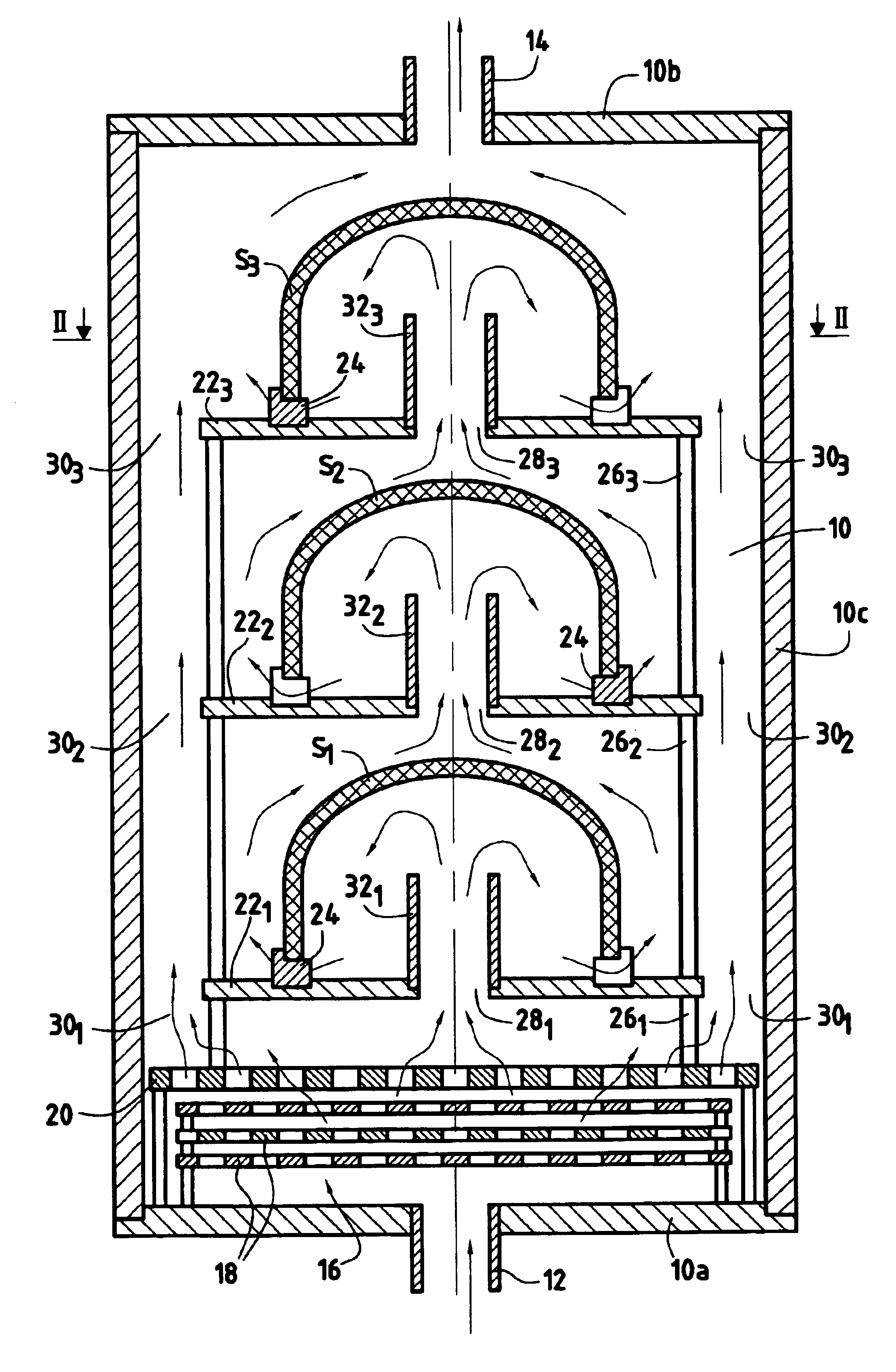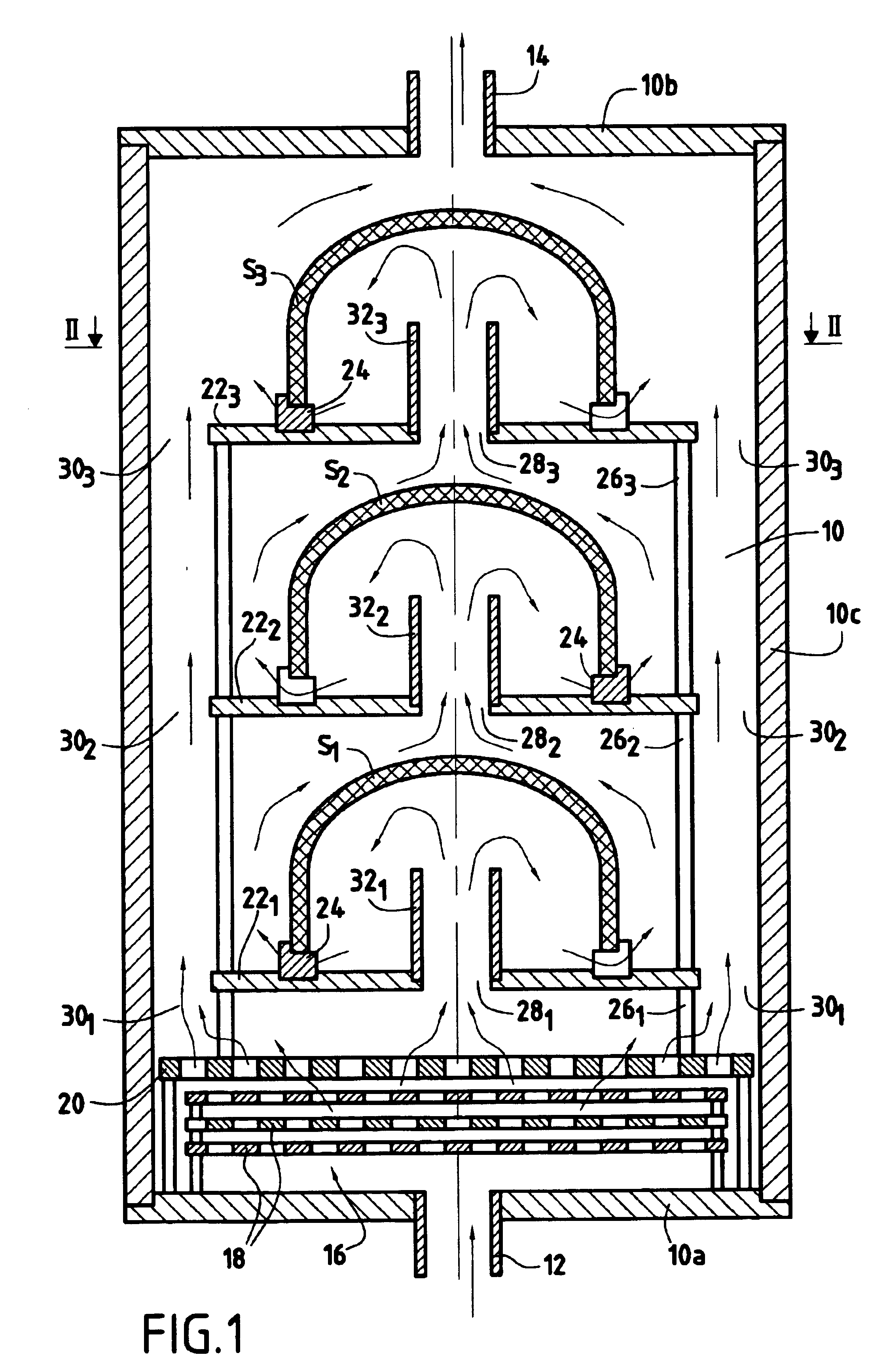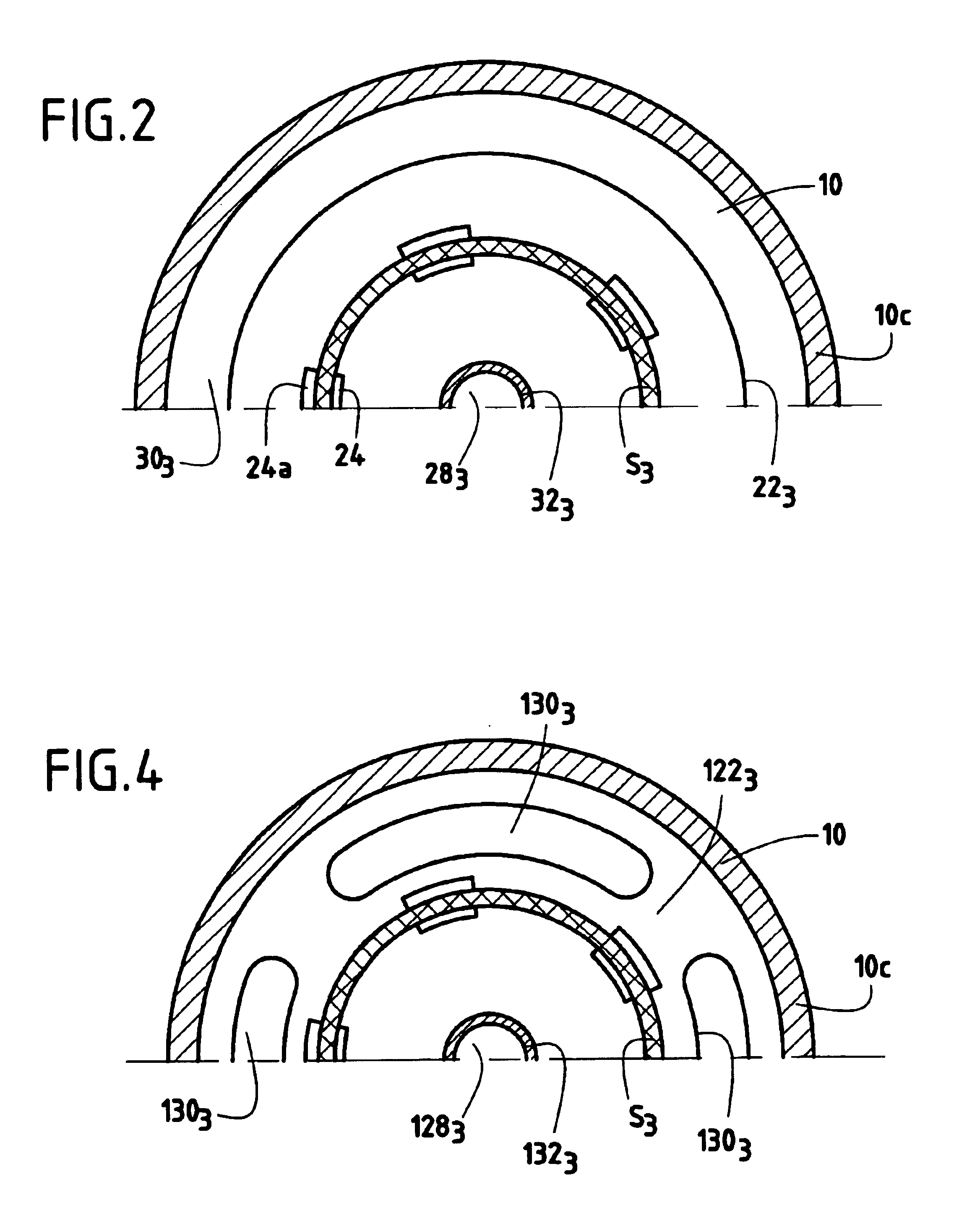Densifying hollow porous substrates by chemical vapor infiltration
a technology of hollow porous substrates and chemical vapor infiltration, which is applied in the direction of liquid surface applicators, chemical vapor deposition coatings, coatings, etc., can solve the problems of spoiling the properties of the substrate, soot or undesirable projections on the substrate, and defects observed by the substrate, etc., to achieve the effect of free from defects
- Summary
- Abstract
- Description
- Claims
- Application Information
AI Technical Summary
Benefits of technology
Problems solved by technology
Method used
Image
Examples
example
[0085]Substrates constituted by bowl preforms were densified using an installation of the kind shown in FIG. 7. The substrates were built up from two-dimensional carbon fiber plies draped onto a shaper and consolidated by being impregnated with a resin followed by polymerization and carbonization of the resin.
[0086]The substrates were densified with a matrix of pyrolytic carbon by admitting a gas into the enclosure comprising natural gas or methane as the gaseous precursor for pyrolytic carbon.
[0087]The temperature and the pressure inside the enclosure were maintained substantially constant throughout the densification process, at values equal to about 1000° C. and 1.5 kilopascals (kPa).
[0088]Once densification had been completed, no projections or soot formations were observed. The inside faces of the resulting C / C composite material bowls were of good appearance, as shown in FIGS. 9 and 10 where FIG. 10 is an image obtained using an optical microscope, with □440 magnification, sho...
PUM
| Property | Measurement | Unit |
|---|---|---|
| diameter | aaaaa | aaaaa |
| transit time | aaaaa | aaaaa |
| transit time | aaaaa | aaaaa |
Abstract
Description
Claims
Application Information
 Login to View More
Login to View More - R&D
- Intellectual Property
- Life Sciences
- Materials
- Tech Scout
- Unparalleled Data Quality
- Higher Quality Content
- 60% Fewer Hallucinations
Browse by: Latest US Patents, China's latest patents, Technical Efficacy Thesaurus, Application Domain, Technology Topic, Popular Technical Reports.
© 2025 PatSnap. All rights reserved.Legal|Privacy policy|Modern Slavery Act Transparency Statement|Sitemap|About US| Contact US: help@patsnap.com



